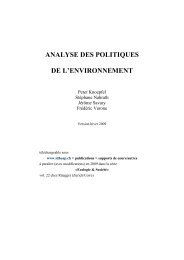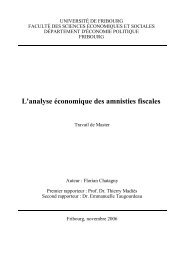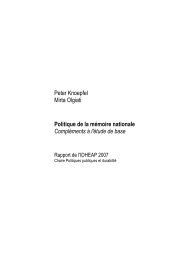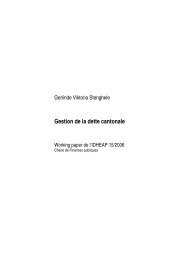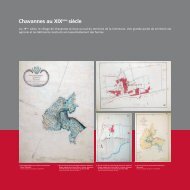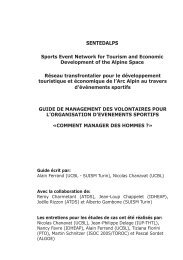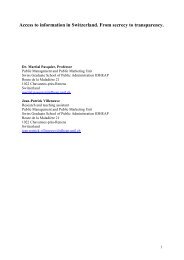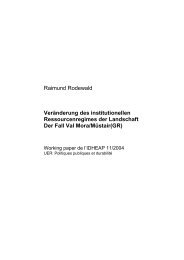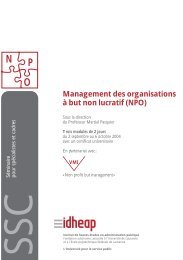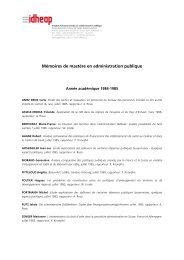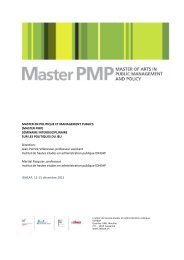Voting advice applications and party choice: evidence from ...
Voting advice applications and party choice: evidence from ...
Voting advice applications and party choice: evidence from ...
You also want an ePaper? Increase the reach of your titles
YUMPU automatically turns print PDFs into web optimized ePapers that Google loves.
<strong>Voting</strong> <strong>advice</strong> <strong>applications</strong> <strong>and</strong> <strong>party</strong> <strong>choice</strong> 371<br />
Finally, research on the impact of electoral systems on electoral behaviour <strong>and</strong><br />
electoral outcome offers some support for our assumption concerning the impact of<br />
VAAs. In his seminal work, Duverger (1959) stated that electoral systems based on<br />
proportional representation lead to <strong>party</strong> systems with more than two parties. More recent<br />
research supports this view <strong>and</strong> could further show that, with an increasing number of<br />
seats per electoral district, the number of parties <strong>and</strong> c<strong>and</strong>idates is also increasing (Cox,<br />
1997). In addition, the findings presented by Ezrow (2010) indicate that larger electoral<br />
districts also lead to more niche parties, which address issues that are more or less<br />
neglected by the traditional parties. To sum up, proportional representation combined<br />
with the increasing size of electoral districts leads to a large <strong>and</strong> growing offer of parties<br />
– <strong>from</strong> quantitative as well as thematic perspectives – on which voters can base their<br />
electoral decisions. These exp<strong>and</strong>ed offerings again make it more difficult <strong>and</strong> timeconsuming<br />
for voters to find suitable parties or c<strong>and</strong>idates to vote for (Sartori, 1968; Cox,<br />
1997). Thus, it is reasonable to assume that, at least in large districts, VAAs could offer<br />
some assistance in this regard.<br />
Even though there are – as we could show – several good reasons to assume that<br />
VAAs affect voters’ electoral <strong>choice</strong>s, the findings of the few existing empirical studies<br />
on this topic show contradictory results. Walgrave et al. (2008) analysed the Belgian<br />
VAA Stemtest (“Do the Vote Test”) <strong>and</strong> its impact on voters during the 2004 election<br />
campaign in Belgium. They found <strong>evidence</strong> that the Stemtest affected Belgian voters in<br />
their electoral <strong>choice</strong>s but only on a very modest level. These findings about the limited<br />
effect of VAAs are somewhat in contrast to those of other studies. Both Kleinnijenhuis et<br />
al. (2007) <strong>and</strong> Rusuuvirta <strong>and</strong> Rosema (2009) found <strong>evidence</strong> that, in elections in the<br />
Netherl<strong>and</strong>s, VAAs played an important role <strong>and</strong> had a clear impact on the voting<br />
decisions of Dutch voters.<br />
In our study, we trace the possibility of whether the information about parties <strong>and</strong><br />
c<strong>and</strong>idates provided by smartvote influences people in their voting decisions <strong>and</strong> whether<br />
this influence might eventually lead voters to rethink their initial <strong>party</strong> preferences.<br />
Although we cannot make any causal claims regarding the relationship between the VAA<br />
voting recommendations <strong>and</strong> the final vote <strong>choice</strong>s of voters, we can nevertheless<br />
examine whether we find higher occurrences of swing-voting among those smartvote<br />
users who report that they were, in fact, receptive toward the voting <strong>advice</strong> given to them<br />
by smartvote.<br />
3 Data<br />
Against the background of the 2007 Swiss parliamentary elections, the NCCR Democracy<br />
research project conducted two surveys among the users of smartvote. 1 The first survey<br />
started before the election. After receiving their voting recommendations, users were<br />
asked to participate in the additional NCCR survey by clicking on a link that led them to<br />
a special website where they could fill out the pre-election survey, which included<br />
questions about socio-demographic characteristics, voting behaviour in previous<br />
elections, <strong>and</strong> voting intentions with regard to the upcoming election. Some days after the<br />
election, the respondents received an e-mail <strong>and</strong> were asked to fill out the post-election<br />
survey, which focused on actual voting behaviour in the 2007 elections. In total, 4331<br />
users completed this survey.<br />
In addition, a second post-election survey was conducted. This second survey<br />
comprised both parts of the first survey <strong>and</strong> was conducted after the election. Smartvote<br />
offers its users the opportunity to create their own user accounts on the website to save



